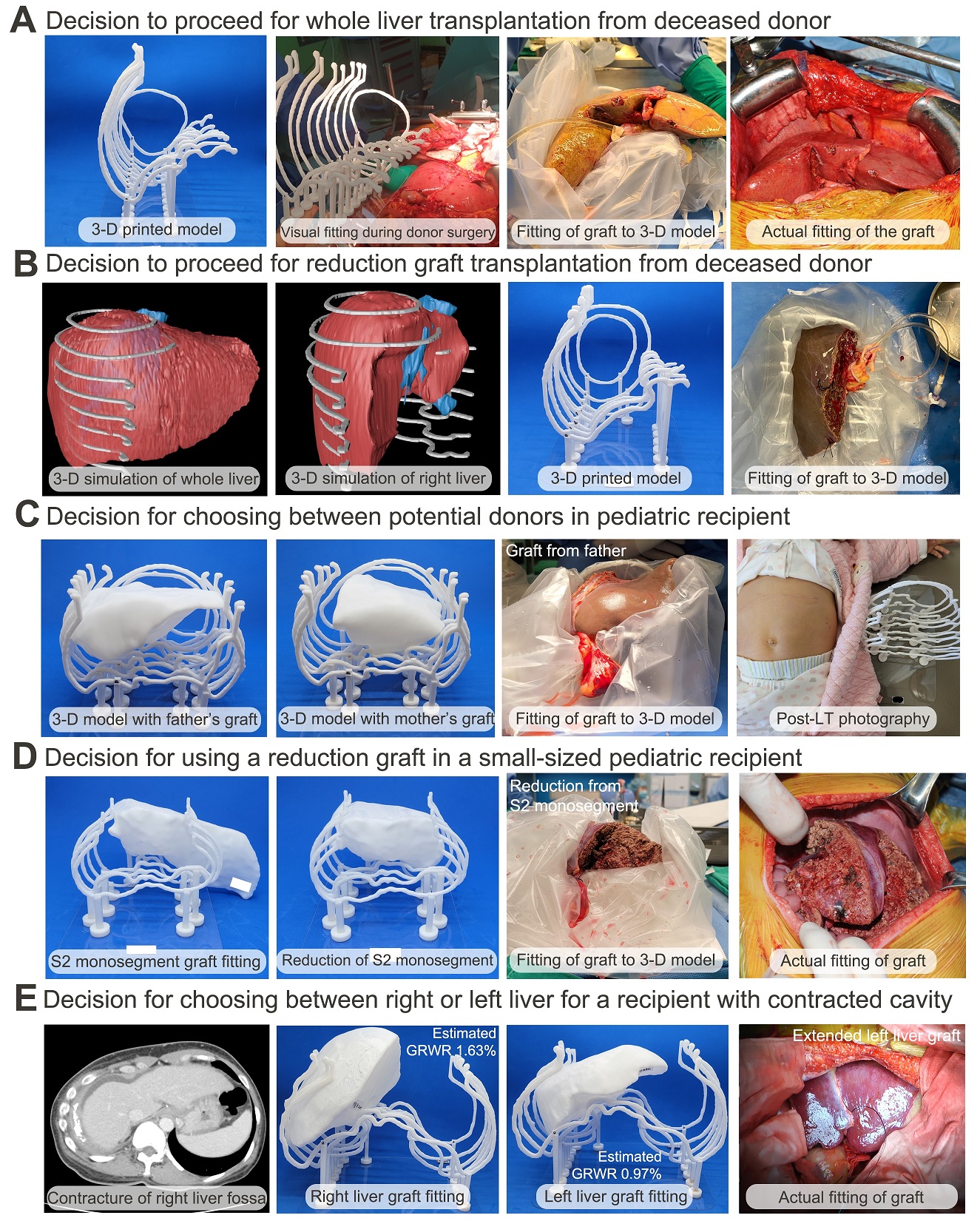Cost-Effective and Time-Saving Three-Dimensional (3-D) Printing Protocol of Intra-Abdominal Cavity of Liver Transplantation Recipient to Prevent Large-for-Size Syndrome
General Surgery, Samsung Medical Center, Seoul, Korea, Republic of
Meeting: 2022 American Transplant Congress
Abstract number: 1441
Keywords: Liver transplantation, Organ Selection/Allocation
Topic: Clinical Science » Liver » 57 - Liver: Surgery Innovative Techniques*
Session Information
Session Name: Liver: Surgery Innovative Techniques*
Session Type: Poster Abstract
Date: Monday, June 6, 2022
Session Time: 7:00pm-8:00pm
 Presentation Time: 7:00pm-8:00pm
Presentation Time: 7:00pm-8:00pm
Location: Hynes Halls C & D
*Purpose: The application of Three-dimensional (3-D) printing has been increasing and we invented a protocol for a cost-effective and time-saving 3-D model of intra-abdominal cavity to prevent large-for-size syndrome during liver transplantation.
*Methods: 3-D printing were performed on potential recipients with small cavity during July 2020 to July 2021. During deceased donor organ procurement, size of the graft was compared to the model while 3-D printed graft was physically placed into the 3-D model in living donor transplantation.
*Results: Nine adults and five pediatric patients were included. Median time for model production was 584 minutes (IQR 502.3-643.8) and estimated median cost for the filament used was 1.59 dollars. (IQR 1.06-1.68) With the guidance of 3-D printed model, transplantation of reduction graft from deceased donor (n=1), whole liver transplantation after giving up the previous donor match (n=2), whole liver transplantation from the first matched donor (n=4), right hemiliver transplantation from living donor (n=1) and extended left liver transplantation rather than right liver from living donor after giving up the previously matched deceased donor (n=1) were resulted using 3-D printed model in adult patients. Among pediatric patients, two cases were resulted in reduction graft as planned during preoperative planning and three cases resulted in extended left lateral graft transplantation. All the cases with 3-D printed abdominal cavity showed appropriate fitting of the donor’s liver graft to both the 3-D printed model and actual recipient’s abdominal cavity with no large-for-size syndrome.
*Conclusions: Our cost-effective and time-saving 3-D printed model of intra-abdominal cavity was feasible and proved to be useful for preventing large-for-size syndrome in small adult recipients and pediatric patients.
To cite this abstract in AMA style:
Park S, Choi G, Kim J, Lee S, Joh J, Rhu J. Cost-Effective and Time-Saving Three-Dimensional (3-D) Printing Protocol of Intra-Abdominal Cavity of Liver Transplantation Recipient to Prevent Large-for-Size Syndrome [abstract]. Am J Transplant. 2022; 22 (suppl 3). https://atcmeetingabstracts.com/abstract/cost-effective-and-time-saving-three-dimensional-3-d-printing-protocol-of-intra-abdominal-cavity-of-liver-transplantation-recipient-to-prevent-large-for-size-syndrome/. Accessed December 26, 2025.« Back to 2022 American Transplant Congress

